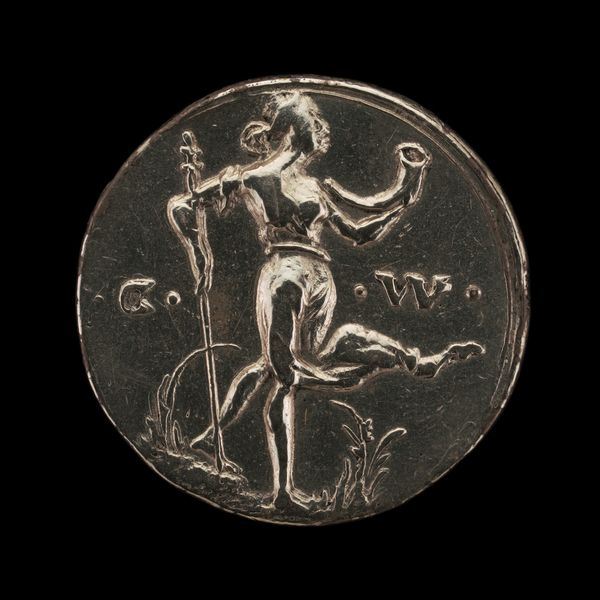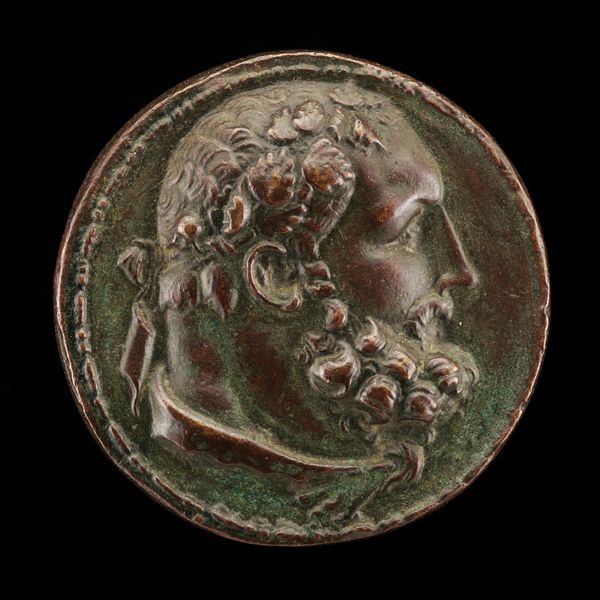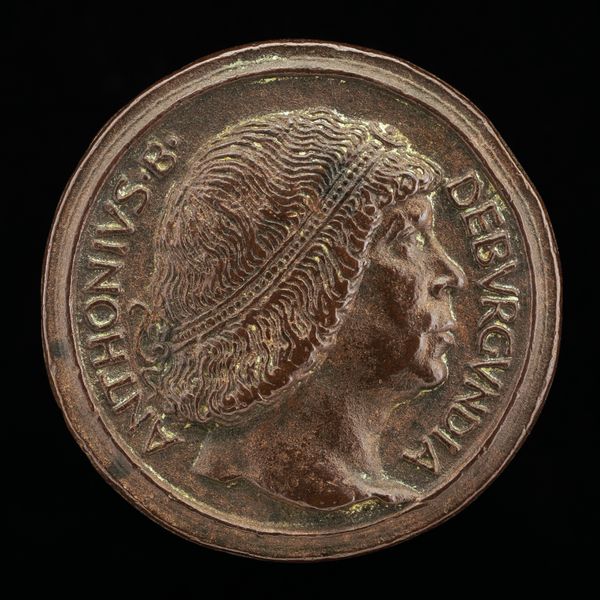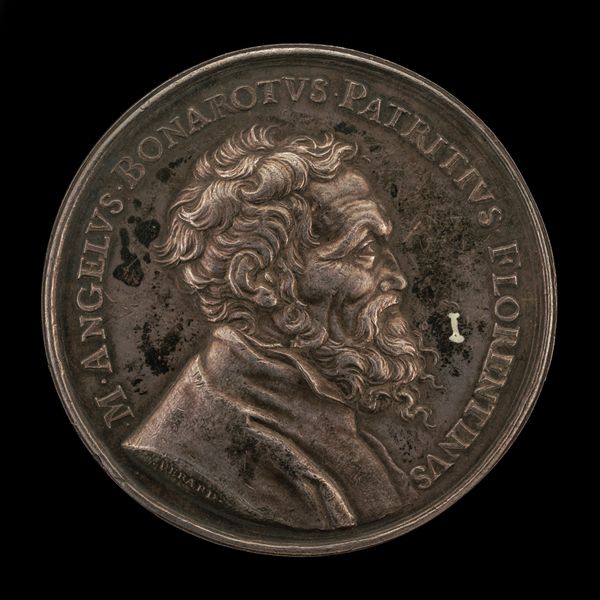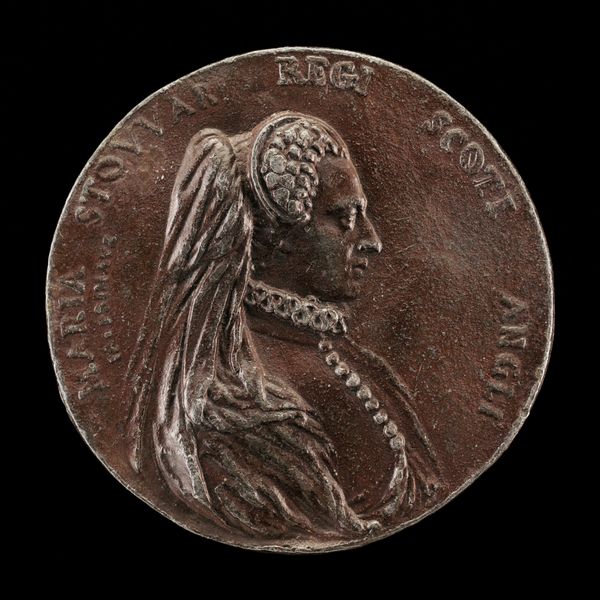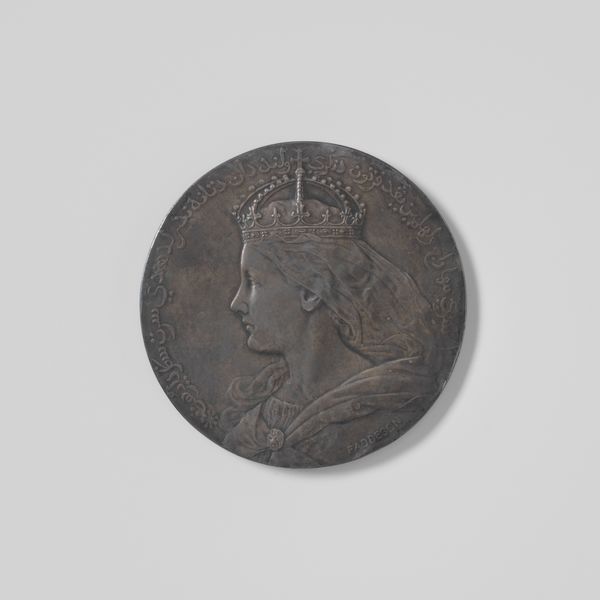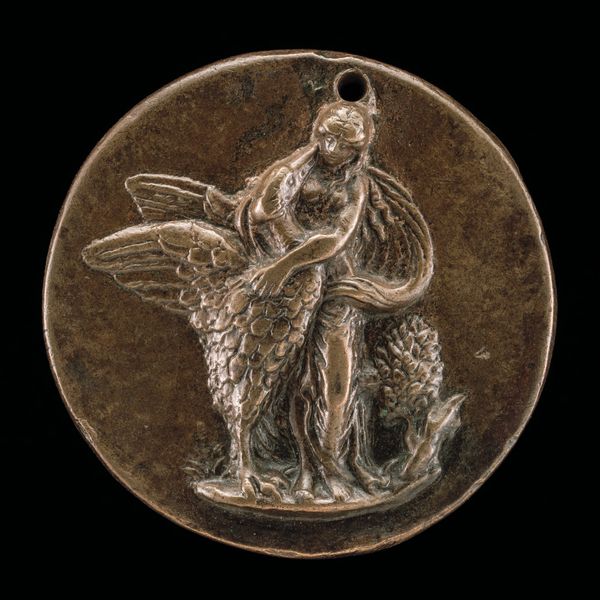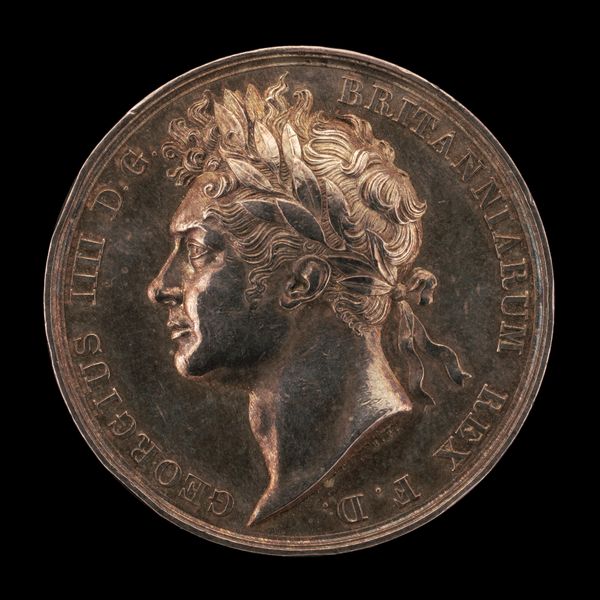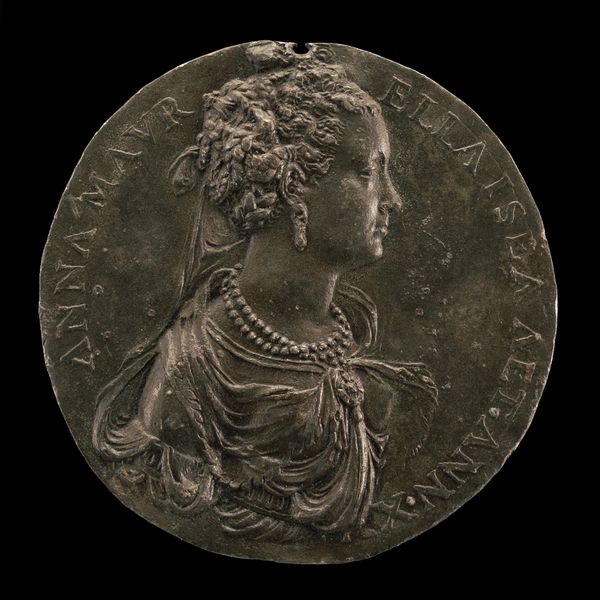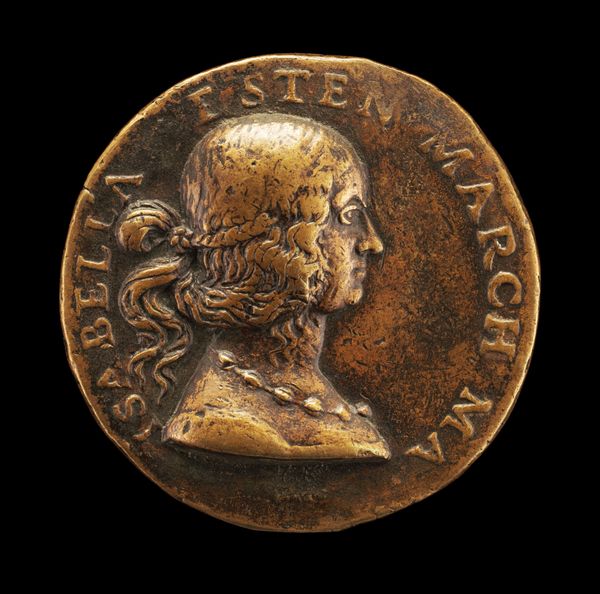![Luna [obverse] by Concz Welcz](/_next/image?url=https%3A%2F%2Fd2w8kbdekdi1gv.cloudfront.net%2FeyJidWNrZXQiOiAiYXJ0ZXJhLWltYWdlcy1idWNrZXQiLCAia2V5IjogImFydHdvcmtzLzVjZTY2YjRmLWI4OWItNDNjZi04YjJmLTM0OWQwNmM3ZWYyYi81Y2U2NmI0Zi1iODliLTQzY2YtOGIyZi0zNDlkMDZjN2VmMmJfZnVsbC5qcGciLCAiZWRpdHMiOiB7InJlc2l6ZSI6IHsid2lkdGgiOiAxOTIwLCAiaGVpZ2h0IjogMTkyMCwgImZpdCI6ICJpbnNpZGUifX19&w=3840&q=75)
metal, relief, sculpture
#
portrait
#
medal
#
metal
#
sculpture
#
relief
#
11_renaissance
#
sculpture
Dimensions: overall (diameter): 1.92 cm (3/4 in.) gross weight: 3.23 gr (0.007 lb.) axis: 2:00
Copyright: National Gallery of Art: CC0 1.0
Editor: Here we have "Luna", a 16th-century medal—likely metal—depicting a portrait in relief. It feels surprisingly modern with its clean lines, despite being centuries old. What immediately strikes you about this piece? Curator: Oh, isn’t she lovely? For me, this object whispers secrets of the Renaissance. It is both classical and intensely personal, wouldn't you agree? Consider that smooth, almost ethereal surface against the firm declaration of the date, 1543. It is the dawn of modern portraiture. A declaration of selfhood rendered into a tiny, holdable sculpture. Now, observe the moon, that gentle sliver behind her. How might we read the lunar presence here, given the portrait’s title? Editor: I guess the moon could symbolize femininity or change, maybe reflecting something about the woman herself? The grapes in her hair also look important, but I'm not sure why. Curator: Grapes can symbolize various concepts – abundance, celebration, and even a connection to Bacchus, the god of wine and ecstasy. It invites us to speculate about Luna's identity. The portrait's almost severe classicism also makes me wonder about this individual's aspirations and social positioning. This small medal invites us to become historical detectives, chasing the echoes of a forgotten life. What story can *you* imagine for Luna? Editor: I love that - historical detectives! Looking at it that way, the medal transforms from just a pretty object into this incredible little time capsule. It feels far less static, suddenly alive. Curator: Exactly! It proves art isn't frozen in time; rather it's an ongoing dialogue across the centuries.
Comments
No comments
Be the first to comment and join the conversation on the ultimate creative platform.

